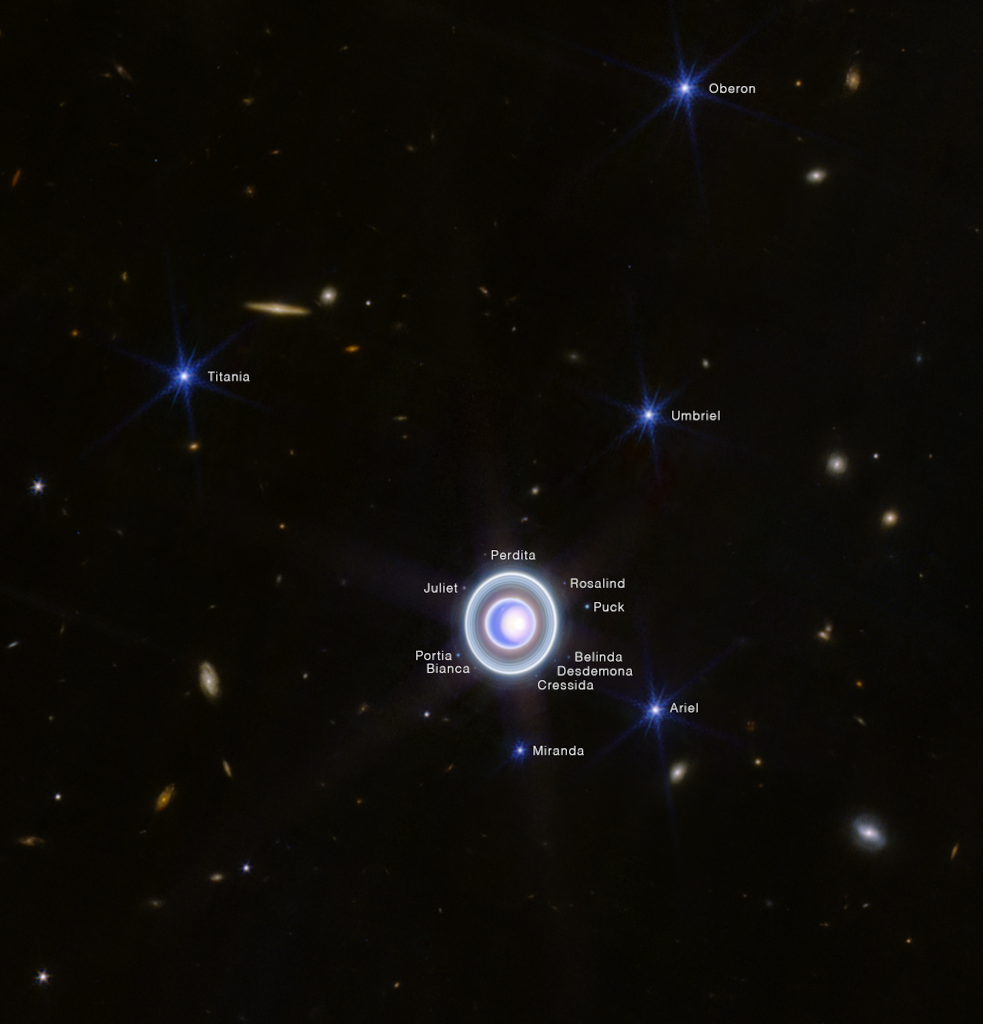
In 1986, Voyager 2 became the only spacecraft to explore ice giant planet Uranus close up. Still, this newly released image from the NIRCam (Near-Infrared Camera) on the James Webb Space Telescope offers a detailed look at the distant world. The tilted outer planet rotates on its axis once in about 17 hours. Its north pole is presently pointed near our line of sight, offering direct views of its northern hemisphere and a faint but extensive system of rings. Of the giant planet's 27 known moons, 14 are annotated in the image. The brighter ones show hints of Webb's characteristic diffraction spikes. And though these worlds of the outer Solar System were unknown in Shakespearean times, all but two of the 27 Uranian moons are named for characters in the English Bard's plays.
from NASA https://ift.tt/3YdVFaR
Comments
Post a Comment